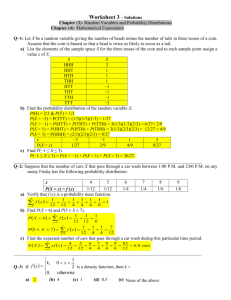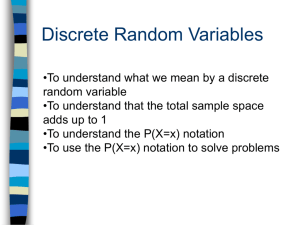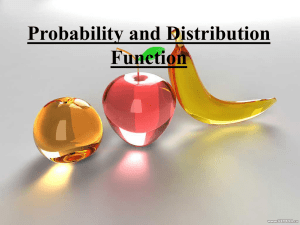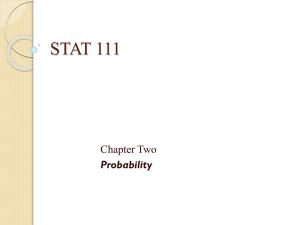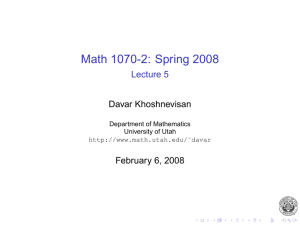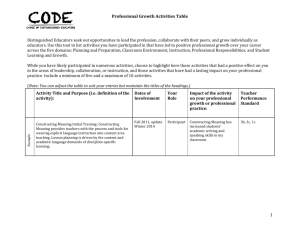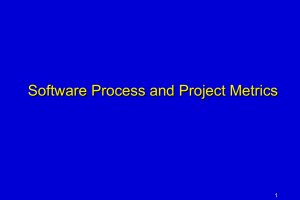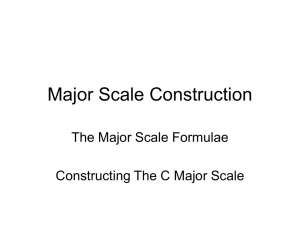5.1 Constructing Models of Random Behavior
advertisement
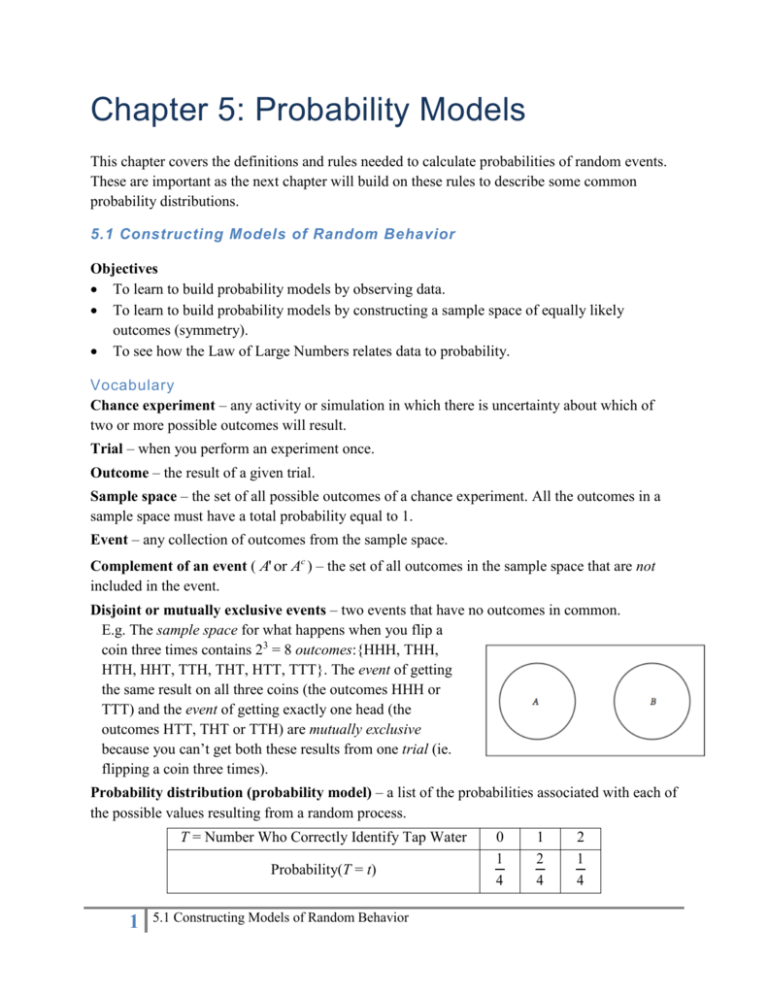
Chapter 5: Probability Models
This chapter covers the definitions and rules needed to calculate probabilities of random events.
These are important as the next chapter will build on these rules to describe some common
probability distributions.
5.1 Constructing Models of Random Behavior
Objectives
To learn to build probability models by observing data.
To learn to build probability models by constructing a sample space of equally likely
outcomes (symmetry).
To see how the Law of Large Numbers relates data to probability.
Vocabulary
Chance experiment – any activity or simulation in which there is uncertainty about which of
two or more possible outcomes will result.
Trial – when you perform an experiment once.
Outcome – the result of a given trial.
Sample space – the set of all possible outcomes of a chance experiment. All the outcomes in a
sample space must have a total probability equal to 1.
Event – any collection of outcomes from the sample space.
Complement of an event ( A' or Ac ) – the set of all outcomes in the sample space that are not
included in the event.
Disjoint or mutually exclusive events – two events that have no outcomes in common.
E.g. The sample space for what happens when you flip a
coin three times contains 23 = 8 outcomes:{HHH, THH,
HTH, HHT, TTH, THT, HTT, TTT}. The event of getting
the same result on all three coins (the outcomes HHH or
TTT) and the event of getting exactly one head (the
outcomes HTT, THT or TTH) are mutually exclusive
because you can’t get both these results from one trial (ie.
flipping a coin three times).
Probability distribution (probability model) – a list of the probabilities associated with each of
the possible values resulting from a random process.
T = Number Who Correctly Identify Tap Water
Probability(T = t)
1
5.1 Constructing Models of Random Behavior
0
1
4
1
2
4
2
1
4
Theoretical Probability
When the outcomes in the sample space of a chance experiment are __________ ___________,
the probability of an event E, denoted by P(E), is:
P(E)
num ber
of out com es
f avor ablteoE
num ber
of out com es
i n t he
sam plspace
e
Relative Probability
The Law of Large Numbers
As the number of repetitions of a chance experiment increases, the chance that the relative
frequency of occurrence for an event will differ from the true probability of the event by more
than any small number approaches 0.
Or more simply - if you repeat a chance experiment, such as tossing a coin or rolling a die, many,
many, many times, the relative probability of your outcomes should on average be equal to the
theoretical probability.
num berof t i m es
E occur s
P(E)
num berof t r i al s
To illustrate this Law, below are the distributions of the results of rolling a die for an increasing
number of rolls.
The following applet also demonstrates the Law of Large Number:
http://bcs.whfreeman.com/ips4e/cat_010/applets/expectedvalue.html
The Counting Principle
This is a quick way to calculate the total number of outcomes for a series of several _____________
events without having to list them all.
If there are m ways to do one event and n ways to do another, then there are m × n ways to do both.
This principle can be extended to any number of events.
2
5.1 Constructing Models of Random Behavior
